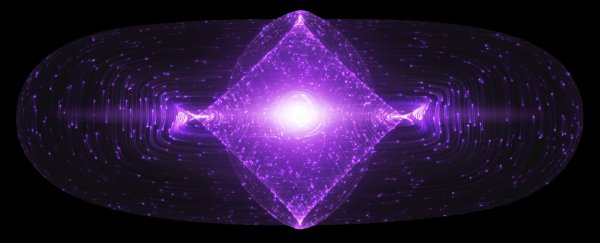The particle known as a Majorana fermion is as mysterious and uncontrollable as it is unique. It's the only known particle that is also its own antiparticle, and has properties that make it an alluring candidate for qubits, the basic unit of information in a quantum computer.
Harnessing that potential, however, is easier said than done - Majorana fermions are slippery little suckers. But a team of particle physicists now reports they've found a way to control them.
"We now have a new way to engineer Majorana quasiparticles in materials," said physicist Ali Yazdani of Princeton University. "We can verify their existence by imaging them and we can characterise their predicted properties."
The system is based on a niobium superconductor, a material that - when supercooled to just above absolute zero - allows electrons to move without resistance. This is combined with a bismuth topological insulator, a material that is insulating on the inside, but conductive on the outside.
Majorana fermion quasiparticles are simultaneously a conducting electron and its antiparticle, the hole left behind by such an electron in a crystal atomic lattice. Normally, a particle and antiparticle in the same space will annihilate each other, but entangled pairs of Majorana quasiparticles are held apart from each other, at either end of a special wire.
This enables the storage of quantum information at two discrete locations, which means that it cannot be disrupted unless both ends of the system are disturbed at the same time.
However, Majorana quasiparticles are also very fragile - they do not survive under strong external vibrational perturbations, and they can only exist within a small temperature range. So the superconductor-topological insulator system creates a setting that makes Majorana fermions more robust and resilient.
But with the addition of tiny magnets, the team demonstrated something else, beyond this increased stability: They could turn the quasiparticles on and off.
Majorana quasiparticles were predicted to appear at the edge of a topological insulator in contact with a semiconductor, where the proximity to the superconductor provokes resistance-free electron flow along the wire-thin edge of the topological insulator.
Because Majorana quasiparticles appear at the ends of wires, it should be possible to make them appear by "cutting" the insulator "wire". So that's what the team did.
"It was a prediction, and it was just sitting there all these years," Yazdani said. "We decided to explore how one could actually make this structure because of its potential to make Majoranas that would be more robust to material imperfections and temperature."
They set up the superconductor and the topological insulator, and added magnets to interrupt the flow of the electrons, effectively acting as the "cut" in the wire. But when they used a scanning tunneling microscope to study the experiment, they found that the quasiparticles only appeared sometimes.
It rapidly became apparent that the magnets had something to do with it: The Majorana quasiparticles only appeared when the magnets were magnetised parallel to the flow of electrons.
"When we began to characterise the small magnets, we realised they are the control parameter," Yazdani said. "It is an on-off switch."
Here's why having such fine control over these fermions is really cool: To be used in quantum computing, information would be stored in Majorana quasiparticle pairs. Computation would be performed by braiding these pairs together, with the results of the computation depending on the annihilation of pairs.
Depending on how the quasiparticles are braided, this annihilation would produce a detectable charge that would indicate the appearance of an electron, or nothing. The probabilistic outcome of this annihilation could become the foundation of Majorana quantum computing, although we're still a far way off from this reality.
So, the next stop? Trying to produce the same result in bismuth nanowires, and other 2D and 3D topological insulators.
The research has been published in Science.
